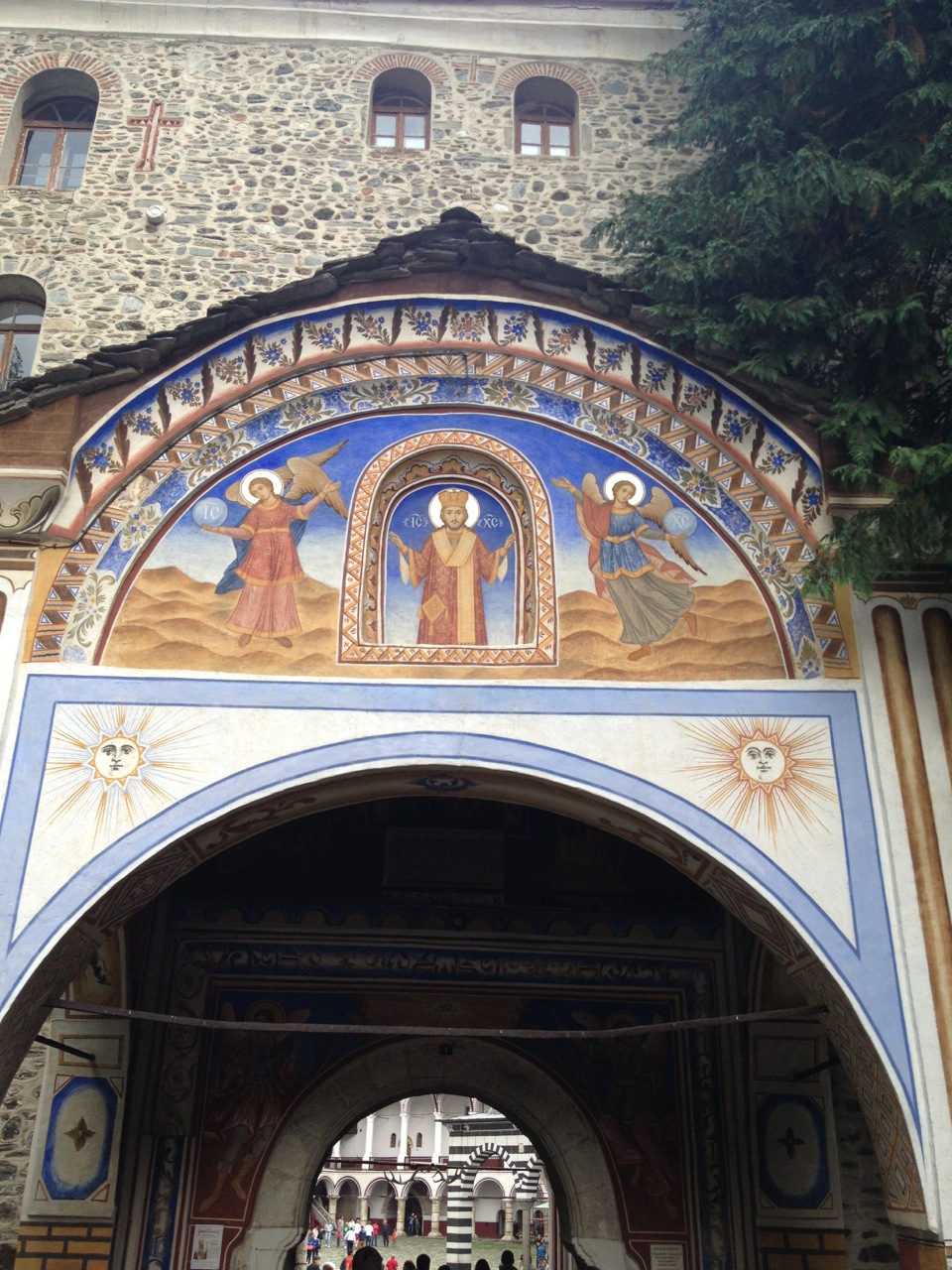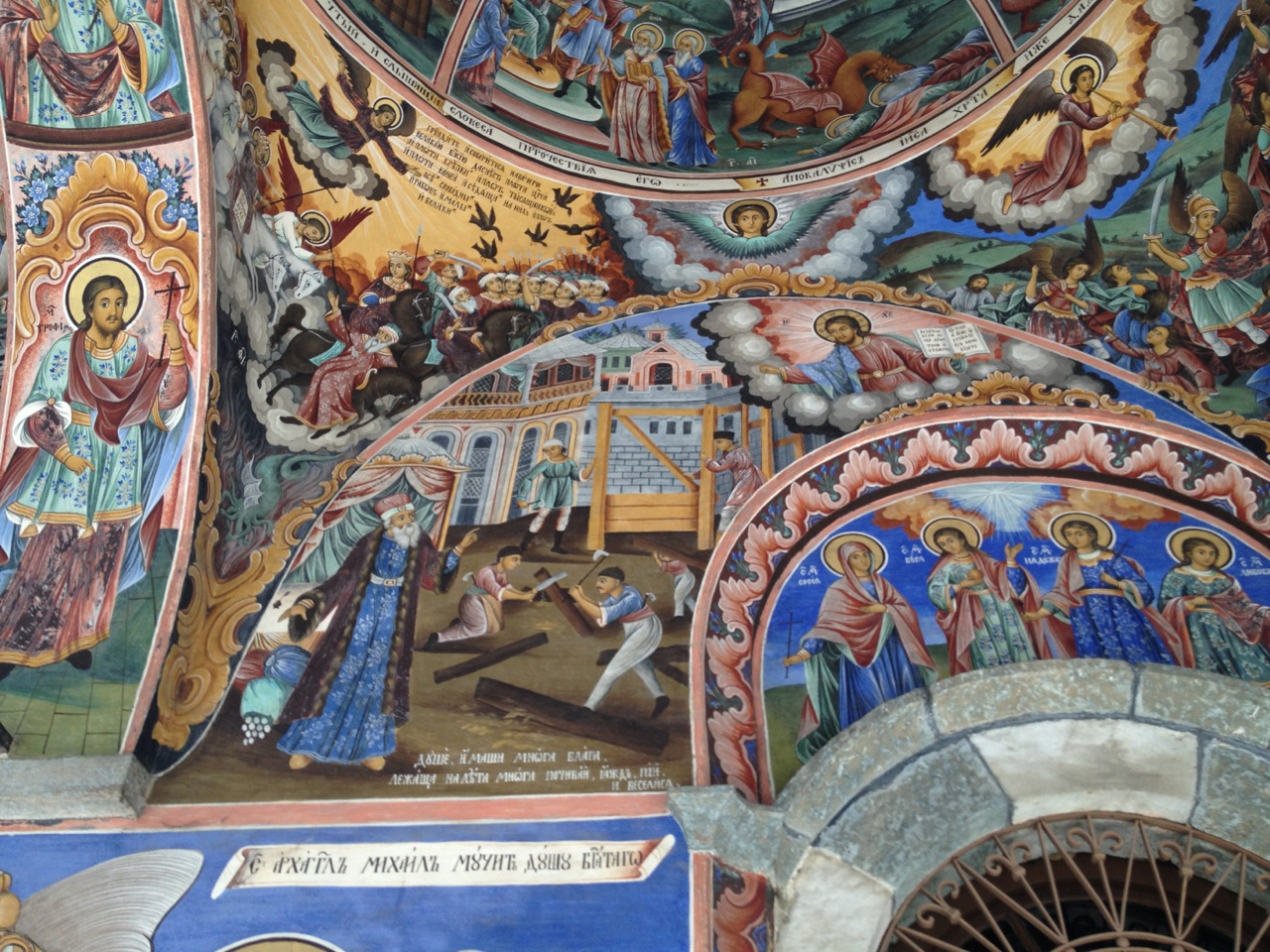Founded in 10th century by St. Ivan of Rila; the cultural and spiritual center heavily supported and respected by Bulgarian rulers of the past; the depository of cultural and spiritual heritage; during its illustrious history, destroyed by raids and fire and rebuilt number of times (last time it was destroyed by fire in 1833 and then reconstructed between 1834 and 1862 given its present look); a UNESCO World Heritage Site since 1983; currently, the biggest monastery in Bulgaria; since 1991 it has been entirely subordinate to the Holy Synod of the Bulgarian Orthodox Church; situated in the mountains about 120 km from Sofia.

No wonder, it’s one of the most popular tourist destinations in Bulgaria. The monastery is easily accessible by car or bus and makes a perfect one-day excursion outside the capital.
Absorbing all this information made me skeptical about even going there. Yes, it is the important historical and cultural Bulgarian landmark, but it also bears all symptoms of a classical tourist trap. However, approaching the second month of staying in Sofia, we wanted a short break from the city life. That’s how we ended up visiting the Rila Monastery.
We snatched the last parking spot in front of the main gate (btw, there are more parking spaces in the back as we learned later). The walls looked impressively tall and slightly intimidating (after all, they witnessed a fair number of attacks in the past).
We passed the gate and found ourselves in a completely different world. Unexpected, enchanting… Pictures do not make justice to the atmosphere inside the Rila Monastery. The combination of deep green tall pines, lighter leafy trees and bushes, ornate white and red colonnades, the medieval tower and the church covered in frescoes is magical. Even fair amount of people could not break the spell.
Sudden rain spooked all tourists, and we were awarded with a view of the empty grounds filled with the sound of dropping water.
The rain stopped as suddenly as it started. Fluffy white clouds and bright blue skies brought a festive spark instead of dark and slightly sinister mood. The ever present dog went on its sleepy duty.
The main church was built in the mid-19th century and covered with frescoes. The church’s striped painting and the domes are a homage to the Ottoman Empire rule during the times of construction.
The living quarters represent the most intricate architecture of the monastery looking almost like a Venetian palazzo or a fine lace.
The monastery originally was built like a fortress. The tower dating back to 1335 still stands in the middle of the courtyard serving as a well-preserved example of the medieval Bulgaria’s defense installation.
Hungry? There is a restaurant outside the monastery with a decent selection of traditional dishes. Next to the restaurant, there are couple small stalls selling souvenirs and some snacks, beer and locally baked bread.
Some tips for visiting the monastery:
- Visiting hours are 8:00 (8AM) – 18:00 (6PM)
- The parking cost in front of the main gate is 4 lev
- Rila is a functioning monastery, so be mindful of your appearance and wear appropriate clothes (no tank tops, very short skirts and shorts)
- On the way to the monastery, you will see some obscure signs inviting to visit Stob Pyramids. Do not skip it. The pyramids are an amazing natural wonder and totally worth an hour of walking there and back.
Rila Monastery on Google Maps:



























